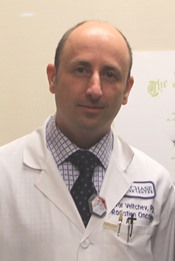Program Information
Source Migration Following Radio-Embolization with Yttrium-90 Microspheres
I Veltchev*, M Doss , J Yu , J Meyer , C Ma , Fox Chase Cancer Center, Philadelphia, PA
Presentations
WE-F-201-12 (Wednesday, August 2, 2017) 1:45 PM - 3:45 PM Room: 201
Purpose: Radio-embolization with yttrium-90 microspheres is used for the treatment of unresectable hepatic metastases. Targeting verification and absolute dose reconstruction is routinely done on a post-treatment PET/CT scan performed a few hours after the treatment. The assumption is that after several hours the microspheres are stationary and the PET/CT scan represents the final distribution of the radioactive sources. In this study we analyze the dosimetric impact of source mobility, and develop a clinical protocol for estimating the true microsphere migration rate for individual patients.
Methods: Six patients consented to an IRB-approved second-day PET/CT scan. Both CT scans were recorded with identical parameters, on the same scanner, and in the same position. Mean radiation dose and total activity for whole liver and target were obtained from both scans and compared to the values, calculated from the decay of the yttrium-90. The accuracy of the total activity measurements was verified in a dedicated phantom study. Any deviation from the expected total activity in the liver is a result of post-treatment physiologic elimination/uptake of microspheres, whereas deviation in the target is a result of migration of the microspheres within the liver.
Results: The mean deviation of total liver activity among the six patients was under 1%. Three patients had significant deviation in the mean target dose (+27%, +12%, -10%), while only one patient had no deviation in both liver and target. Since 75% of the radiation dose is absorbed after the first day post-treatment, this patient-specific microsphere mobility must be taken into accounted in the final dose calculations.
Conclusion: The source migration following radio-embolization with yttrium-90 microspheres varies significantly among patients. Second-day PET/CT scan is a valuable source of additional information about the final distribution of the microspheres impacting the absorbed dose to the target and total activity in the liver.
Contact Email:
